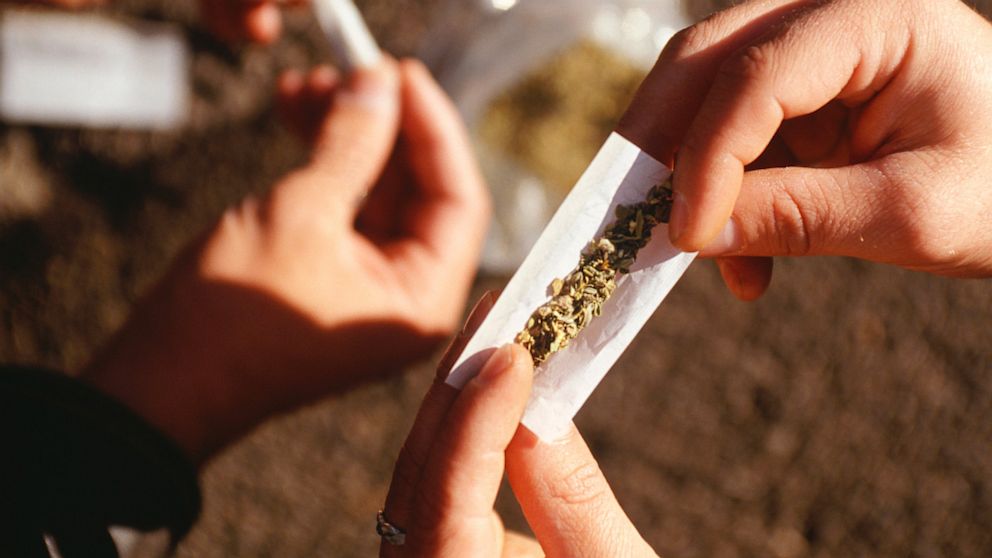Spirit Filled or Drug Filled – Part 3: Commonly Abused RX Drugs
Written by: Dr. George Crabb
Issue: October Blogs
Good day in the Lord Jesus Christ! The last two weeks we discussed Bath Salts and Club Drugs. Today in our blog we are going to take a closer look at the abuse of prescription drugs. Over the course of the next four weeks we will look at:#1 Marijuana
#2 Spice (Synthetic Marijuana)
#3 Salvia
#4 MDMA (Ecstasy)
It is God’s desire that He completely sanctify every aspect of our lives – spirit, soul, and body – according to I Thessalonians 5:23. God desires to direct our thoughts, our words, and our actions – this is called being “filled with the Spirit” Ephesians 5:18.
As children of God, our bodies are the temple of the Holy Ghost (I Corinthians 6:19). With this in mind we are to glorify God in our bodies because our bodies belong to Him (I Corinthians 6:20). A child of God dishonors God when they introduce into their body (which belongs to God) harmful substances. These substances are not only physically and soulically harmful, but they also diminish our sobriety which in turn decreases the Spirit’s ability to completely control our lives. When we partake of any of these substances, no matter how little it may be, we start the process of becoming filled with them and less filled with the Spirit.
I pray that all of us will attempt, by the grace of God, to live a Spirit filled life and that none of these substances will ever take away the power of God in our lives.
Commonly Abused Prescription Drugs
Medications can be effective when they are used properly, but some can be addictive and dangerous when abused. The following list of prescribed medications has the potential for adverse medical consequences, including addiction.Opiates: Codiene – Tylenol #3, many cough suppressants.
Morphine – MS Contin, Roxanol, Duramorph.
Methadone – Dolophine
Fentanyl – Duragesic
Oxycodone – OxyContin, Percocet
Hydrocodone – Vicodin, Norco, Lortab
Hydromorphone – Dilaudid
Barbituates: Fiorcet, Amytal, Phenobarbital
Benzodiazepines: Ativan, Valium, Xanax, Klonopin
Sleeping Medications: Ambien, Lunesta, Sonata
Stimulants: Amphetamines – Adderall, Dexedrine
Methylphenidate – Concerta, Ritalin
In 2010, approximately 16 million Americans reported using prescription drugs for nonmedical reasons in the past year; 7 million in the past month.
How Are Prescription Drugs Abused?
Prescription drugs may be abused in one of the following ways:#1 Taking a medication that has been prescribed for somebody else. Unaware of the dangers of sharing medications, people often unknowingly contribute to this form of abuse by sharing their unused pain relievers with their family members.
Note: Most teenagers who abuse prescription drugs are given them for free by a friend or relative.
#2 Taking a drug in higher quantity or in another manner than prescribed. Most prescription drugs are dispensed orally in tablets, but abusers sometimes crush the tablets and snort or inject the powder. This hastens the entry of the drug into the bloodstream and the brain and amplifies its effects.
#3 Taking a drug for another purpose than prescribed. All of the drug types mentioned can produce pleasurable effects at sufficient quantities, so taking them for the purpose of getting high is one of the main reasons people abuse them.
ADHD drugs like Adderall are also often abused by students seeking to improve their academic performance. However, although they boost alertness, there is little evidence they improve cognitive functioning for those without a medical condition.
How Do Prescription Drugs Affect the Brain?
Stimulants such as Ritalin achieve their effects by acting on the same neurotransmitter systems as cocaine. Opiod pain relievers such as OxyContin attach to the same cell receptors targeted by illegal Opiods like heroin. Prescription depressants produce sedating or calming effects in the same manner as the club drugs GHB and rohypnol.When abused, all of these classes of drugs directly or indirectly cause a pleasurable increase in the amount of dopamine in the brain’s reward pathway. Repeatedly seeking to experience that feeling can lead to destruction.
What Are the Other Health Effects of Prescription Drugs?
Stimulants can have strong effects on the cardiovascular system. Taking high doses of a stimulant can dangerously raise body temperature and cause irregular heartbeat or even heart failure or seizures. Also, taking some stimulants in high doses or repeatedly can lead to hostility or feelings of paranoia.Opiods can produce drowsiness, cause constipation, and – depending upon the amount taken – depress breathing. More people die from overdoses of prescription Opiods than from all other drugs combined, including heroin and cocaine.
CNS depressants slow down brain activity and can cause sleepliness and loss of coordination. Continued use can lead to physical dependence and withdrawal symptoms if discontinuing use.
Prescription drugs, when used appropriately and monitored carefully, can be of tremendous benefit. However, these potentially helpful medications can quickly turn to dangerous and destructive chemicals if abused. I pray that these medications will never control any portion of our lives but that our lives will be totally governed by the Holy Spirit of God.





